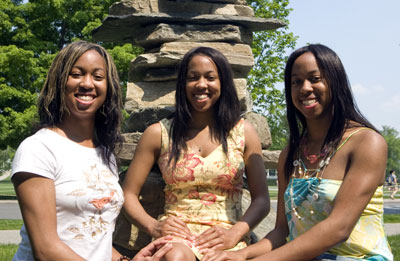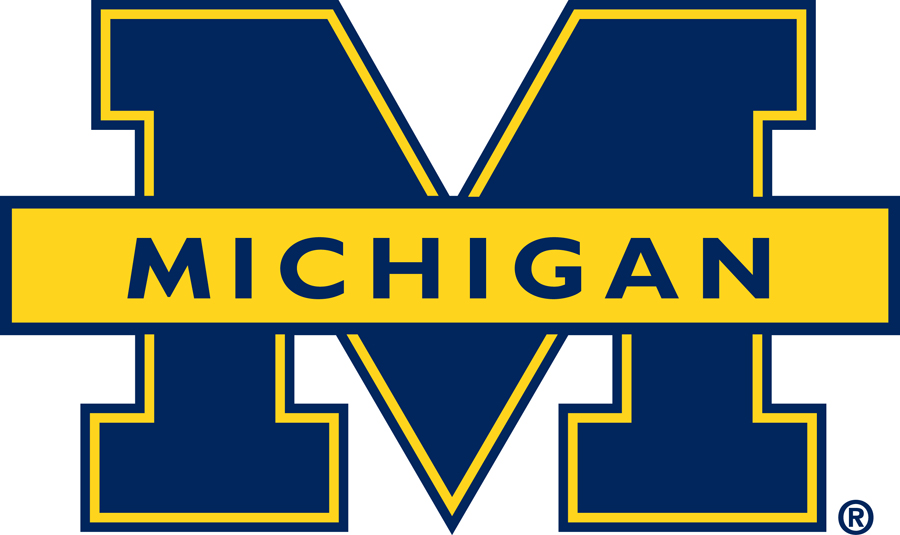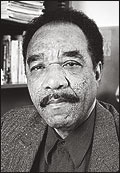
Jafar Abdul-Hafiz, Merrillville High School’s first Black male valedictorian, entertains his class with an unconventional commencement address.
Kudos to each of these outstanding Black 2007 Graduates for their exceptional performance as scholars and leaders:
Karen Morris, featured on the Oprah Winfrey Show as the first grandmother ever to graduate from Yale Medical School.
Jonah Brown, president of the University of Kentucky student government for the 2006 – 2007 school year, and chosen as this year’s student commencement speaker. University of Kentucky News describes Brown as “a political science major from Richmond, Ky.,” with an “extensive record of involvement during his four-year career at UK”:
Among several positions of leadership Brown held on campus, he served as a student ambassador for the university as well as the College of Arts and Sciences; he was a residence hall student president and president of the Resident Student Association; he served as vice president of his fraternity and as a delegate to the national Pan-Hellenic Council.
William H. Gray, III, honored at the Princeton Theological Seminary Commencement as this year’s distinguished alumnus (class of 1970). The Princeton Packet describes his achievements:
Mr. Gray is chairman of the Amani Group, a governmental, educational, and business advisory group. He was president and chief executive officer of The College Fund/United Negro College Fund from 1991 to 2004.
Mr. Gray served in the U.S. Congress from 1979 to 1991, was the first African-American to chair the House Budget Committee, and became chairman of the Democratic Caucus. He was also the first African-American in the 20th century to become majority whip of the House of Representatives, a position he held from 1989 to 1991.
He is pastor emeritus of the nearly 7,000-member Bright Hope Baptist Church in Philadelphia, as were his father, William H. Gray Jr., Princeton Seminary Class of 1953, and grandfather before him, and he has been a professor of religion and history at St. Peter’s College, Jersey City State College, Montclair State College, Palmer Theological Seminary, and Temple University.
Mr. Gray earned a bachelor of arts degree in history at Franklin and Marshall College, a master of divinity degree from Drew University Theological School, and a master of theology degree from Princeton Theological Seminary.
Paulette McRae, who became the first African American to earn a Ph.D. in neuroscience from Yale University.
Breanna Fields, who on June 21, 2007 will become Teaneck (New Jersey) High School’s first African American valedictorian. She will graduate at the top of her class of 375 seniors, with a 4.87 G.P.A. In the fall she will begin undergraduate studies at Yale University where she plans to study political science. She offers this advice to incoming Teaneck freshmen:
Set your goals high. Definitely take classes that will challenge you. You can always step down if it’s too hard, but you’ll never have to regret saying, ‘I should have tried that class.’ And be involved, even if it’s one club. You can’t get a full high school experience by just going home after school. You don’t have to do a laundry list of things, but be passionate about what you do.
Martha-Elizabeth Baylor, who upon defending her doctoral thesis in August of this year will become the first African American to earn a Ph.D. in physics from the University of Colorado, Boulder. As an undergraduate at Kenyon College she doubled majored in physics and Chinese. When asked by a local columnist why she chose physics, Baylor responded, “I was never good at English and the humanities. OK, math was a possibility. But, to tell the truth, (physics) was easy for me.”
Jafar Abdul-Hafiz, who recently became Merrillville (Indiana) High School’s first African American male valedictorian. One of six valedictorians (in a graduating class of 505 students), all of whom had 4.0 grade point averages, Abdul-Hafiz was senior class president. He hopes to become a surgeon.

William Chin, Charles H. Flowers High School valedictorian, talks science with fellow classmates.
William Chin, the valedictorian of his graduating class at the largely Black Charles H. Flowers High School in Maryland. Chin, an Eagle scout, scored 2000 on the SAT and was admitted to Duke, the University of Pennsylvania, Carnegie Mellon, Georgia Tech, the University of Virginia, the University of Maryland at College Park, Howard, North Carolina State, North Carolina A&T, and M.I.T., his first choice. He will attend M.I.T. Chin has many fans, including his guidance counselor, Heather Roberts. Says Roberts, “He kind of reminds me of Bill Gates. You know he’s going to do something phenomenal.”
Dorothy Donkor (valedictorian) and Julian Brooks (third in the class), graduating seniors at California’s Rio Linda High School who also happen to be cousins. Both students will attend Stanford University in the fall. Dorothy plans to major in chemistry, while Julian plans to study engineering. Both cousins are part of an exceptional class of African American Rio Linda seniors, four of whom are ranked within the top eight students in the class.
Posted by Ajuan Mance









